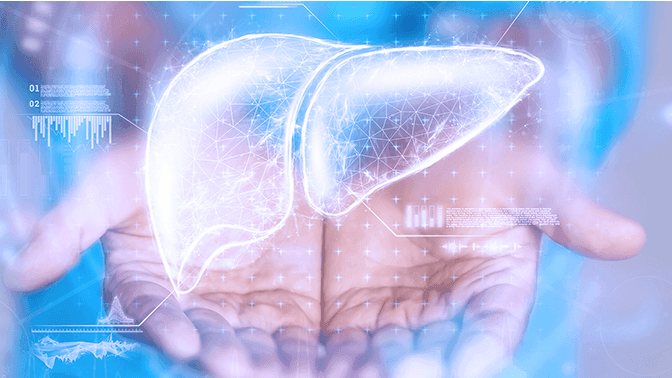
Navigating NASH Treatment
Future therapies for chronic liver diseases.

Nonalcoholic fatty liver disease (NAFLD) encompasses conditions characterized by excess fat in the liver unrelated to alcohol consumption. In the U.S., approximately 25% of adults are affected, with two main types: simple fatty liver (NAFL) and nonalcoholic steatohepatitis (NASH). NASH, the most severe form of NAFLD, leads to liver inflammation, swelling and damage, affecting those with conditions like obesity, diabetes, high cholesterol and occurring typically between ages 40-60. About 20% of NAFLD patients face NASH, which is becoming a leading cause of liver transplantation.
Chronic liver disease advances through varying fibrosis stages to cirrhosis, typically diagnosed through a liver biopsy. The traditional treatment approach involves weight loss and increased physical activity. Weight loss can reduce fat, inflammation and fibrosis in the liver. Currently, there are no FDA-approved drug therapies for NAFLD, be it NAFL or NASH.
Resmetirom, a thyroid receptor beta agonist from Madrigal Pharmaceuticals, may become the first FDA approved treatment for NASH in March 2024. Resmetirom reduces liver fat and lipotoxicity. The Phase 3 trial, MAESTRO-NASH, showcased positive primary and secondary endpoint results with histological improvements as compared to placebo and was safe and well tolerated.
While resmetirom leads the way, NASH treatment developments continue. The pharmaceutical landscape anticipates further approvals in 2025, with other treatment options like semaglutide, a GLP-1 agonist. Other potential therapies that could be approved include azemiglitzone, a thiazolidinedione, being studied in pre-type or type 2 diabetes and belapectin, an IV galectin inhibitor, being studied for NASH cirrhosis. The introduction of these drugs marks a significant shift in the NASH treatment landscape, raising cost considerations for payers.
Given the varying mechanisms of action of the upcoming products, combination therapy is likely going to be a consideration for physicians in treatment. Although trial efficacy has been modest and liver biopsy remains a key clinical trial inclusion criterion, ongoing research on non-invasive diagnostic criteria may reshape the approach to NASH treatment.
Resmetirom signifies a potential breakthrough therapy option for NASH. As the pharmaceutical market adapts to these novel therapies, the medical community awaits further insights and non-invasive diagnostic criteria to optimize the treatment paradigm and manage the associated costs effectively.
For more information on NASH and future treatment developments, click here to read this issue's clinical bulletin.